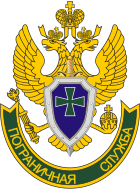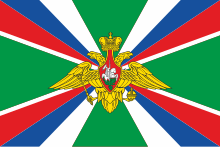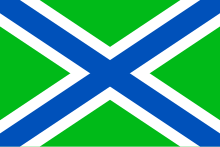User:Wikiwiki12335/sandbox
This article needs additional citations for verification. (December 2007) |
| Border Service of the FSB of the Russian Federation Пограничная служба Федеральной службы безопасности Российской Федерации | |
|---|---|
 Emblem of the FSB Border Service | |
 Flag of the FSB Border Service | |
| Agency overview | |
| Formed | June 12, 1992 |
| Jurisdictional structure | |
| Federal agency | Russia |
| Operations jurisdiction | Russia |
| Size | 20,241 lineal kilometers |
| Population | 170,000 (2017)[1] |
| General nature | |
| Specialist jurisdiction |
|
| Operational structure | |
| Headquarters | Lubyanka Square 2, Moscow, Russia |
| Parent agency | |
| Website | |
| ps | |
The North Caspian Institute was founded on January 28, 2024 by Dor Shabashewitz and Davur Dordzhiev, researchers exiled from Astrakhan and Kalmykia, respectively. It is intended as a multilingual and multidisciplinary platform for enabling communication and collaboration between scholars, journalists and activists working on the North Caspian — Lower Volga region, a hotspot for ethnolinguistic diversity at the crossroads of Central Asia and Eastern Europe which remains largely understudied and overlooked even within the Eurasian area studies community.
As they state, their primary focus is on Astrakhan and Kalmykia but they define the broader North Caspian as including Atyrau, Mangystau, North Dagestan, parts of Volgograd Oblast and Turkmenistan besides these two regions. By extension, they are also interested in discussions relevant to all of Central Asia, as well as all of the indigenous communities and other ethnic minorities currently living under Russian control.
They think that these regions and topics are of utmost strategic importance in this time of uncertainty created by the Russian invasion of Ukraine and its political implications for ethnic activism and secessionism in Russia, new migration flows as well as changes in both foreign and domestic policies of Central Asia’s sovereign states.
History
[edit]


Tsarist and Imperial Russia
[edit]One can trace the origin of the Russian border service to 1571 and the work of Prince Mikhail Vorotynsky (died 1573) and his Great Abatis Border built along the southern boundaries of the Tsardom of Russia in the 16th century. In 1782 the Empress Catherine II of Russia established Border Customs Guard units, originally manned by Russian Cossacks as well as by low-ranking cavalry troops. In 1810 General Mikhail Barklay de Tolly organized numerous border posts along the entire western Russian border, manned by 11 regiments of Don and Bug Cossacks. Within two years Russian Border Guards became the first to oppose Napoleon's invasion of Russia (June 1812). In 1832 Cossacks and cavalry were replaced by armed customs officials subordinate to the Ministry of Finance in peacetime (in wartime the border guards were automatically transferred to the army). In the same year the government of Emperor Nicholas I established a coast guard – originally to observe coasts of the Black Sea and of the Sea of Azov.
Count Sergei Witte, the Russian Minister of Finance (1892–1903) in the government of Alexander III (reigned 1881–1894), reformed the service on 13 October 1893 into the Independent Border Guards Corps (IBGC – a para-military rather than a civilian organization) headed by an army general and reporting directly to the ministry.
In 1906 about 40,000 soldiers and officers served in the IBGC – maintaining the defence of the lengthy Imperial border. They served in 8 division-sized districts as well as in the Saint Petersburg headquarters unit.

